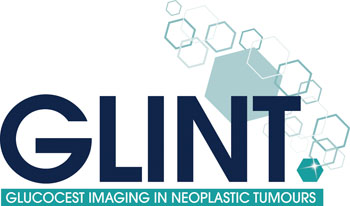MR Imaging Technique Promises More Reliable Cancer Screening and Diagnosis
By MedImaging International staff writers
Posted on 13 Jun 2016
A project to develop a novel advanced medical imaging technology is intended to enable earlier detection of cancer, increase survival rates, and allow for a patients’ full recovery.Posted on 13 Jun 2016
The new imaging technology is intended to provide more reliable and less invasive cancer diagnosis based on a novel Magnetic Resonance Imaging (MRI) technique that could lead to game-changing diagnostic tools for cancer imaging, and enable personalized cancer treatment.

Image: The EU-funded Horizon 2020 GlucoCEST Imaging in Neoplastic Tumours Project (Photo courtesy of GLINT 2016).
The European Union (EU)-funded GlucoCEST Imaging of Neoplastic Tumours (GLINT) project began in January 2016, and makes use of a technique called glucose-based Chemical Exchange Saturation Transfer (glucoCEST). The technique can be used to detect the massive native glucose uptake in tumors as they grow. Previously such glucose measurements had to be made using a radio-labeled glucose imaging agent, and Positron Emission Tomography (PET) imaging. The new technique does not require contrast agents and enables closer treatment monitoring.
Scientific Coordinator of GLINT, and inventor of the glucoCEST method Professor Xavier Golay, University College London (London, UK), said, “GLINT offers for the first time a possibility to bring to the clinics a much-touted new imaging technique, allowing to directly image by MRI native, non-labeled glucose the way PET does it using the expensive radio-labeled sugar analogue fluorodeoxyglucose (FDG). This represents among others a huge hope for pediatric patients and for everyone required to undergo continuous surveillance of cancer progression. It also carries the hope to reduce or at least significantly limit the costs of diagnostic cancer imaging.”
Related Links:
University College London














